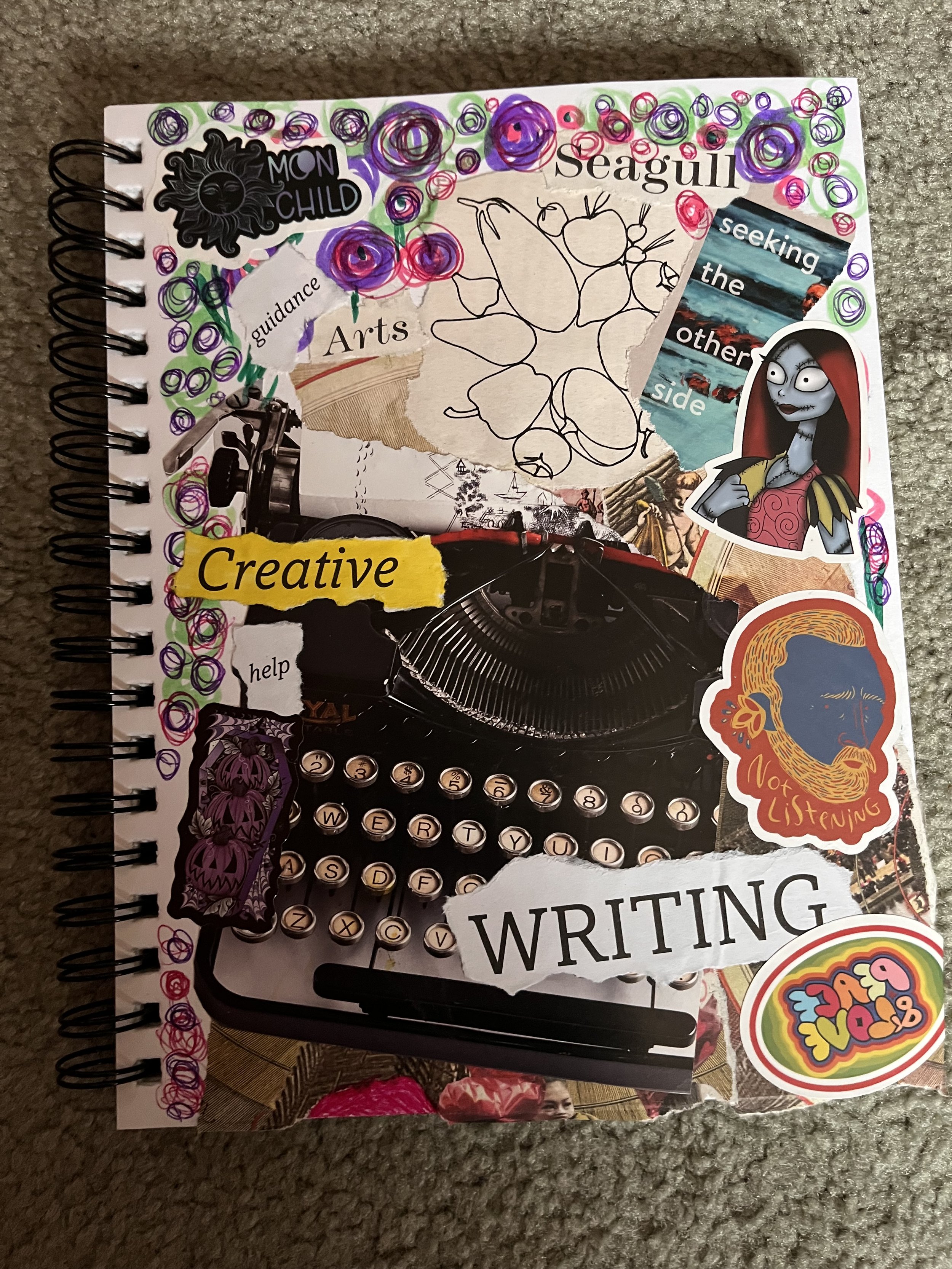Trapped Seagull
In my ongoing effort to use creativity as a grounding force in daily life, I recently read about using art to regain a sense of control. One suggestion was to visualize a safe space—something calming and stabilizing. Another was to depict your emotional landscape abstractly, using shapes and colors to better understand where you are emotionally or where you want to be. Or, in response to the noise of fake news, gaslighting, and nonstop information overload, you could create a collage of words and images that reflect your core values. Who am I? What do I believe? A kind of vision board for the inner self.
That last one spoke to me. In these times—especially in these times—remembering who we are and what we stand for feels both convoluted and crucial. So I sat down to visually reconnect with my values and aspirations. And, since I still can’t draw anything recognizable after all these years of making art, collage felt like a great option.
There’s something inherently empowering in choosing how to represent your experience when you focus on process over product. Even quick, impulsive choices can restore a sense of autonomy, which is great since the words “quick” and “impulsive” should be on my family crest. I made my collage arbitrarily, throwing down images that felt right without thinking too long about anything, a feat that is easy to achieve when you are quick and impulsive.
My struggle with boundaries is well documented—if you count years of journaling about them as documentation. I feel invisible in certain settings, repeat myself to people who don’t hear me, and internalize that disconnection hidden somewhere in my psyche, partially rolled up in a Snickers wrapper. Of course, it showed up in a collage that was supposed to be about my strengths.
“This is me,” I thought. “Creative. A writer. Someone who works with people using these superpowers while also trying to keep her life together.” But when I looked at it a few days later, it had transformed into a one-act play about a walking stressball of boundary issues that writes sometimes. While trying to keep her life together.
The phrase “Seeking the other side” meant the subconscious when I glue-sticked it onto the page, but see how it’s pushing against the edge of the paper, testing the limits. Beneath it, a figure sits tense and alert, eyes wide. She never sleeps. This is what my boundaries feel like—fragile, constantly tested, and exhausting to maintain, especially with people who find loopholes or “forget” they ever existed.
Then there’s the Van Gogh sticker, chosen for the colors and the Van Gogh-ness. Only later did I notice it says “Not Listening.” A funny nod to his ear, sure, but very much on the nose. “Not Listening” sits on top of “Writing,” which is on top of words printed backward. I thought the reversed “Peace and Love” represented untangling messages, decoding the signs. But now it feels like the world is ignoring me while I ignore myself in my writing, using it to vent while walking in circles without taking action. Seeing the pattern, then repeating it anyway. Most of this visual drama happens right at the edge of the page—literally “on the edge.” The backward words spill off the paper, barely holding on. It feels anxious, unstable.
The word “Creative” is bold, but “help” and “guidance” are small, a disproportion that doesn’t exactly scream confidence in my therapeutic identity. Still, “Arts” sits like the fulcrum on a seesaw, balancing between support and chaos. Maybe my values did slip in after all.
And then there’s the seagull—trapped in a corner, encircled in purple, unable to fly. It’s balanced by a heavy, off-kilter typewriter that lurches toward the edge, pulling everything with it. The right side of the collage is crowded, pushing boundaries, while “creative,” “arts,” “guidance,” and “help” float untethered, bringing very little impact and outmatched in gravitas and size, on the left. They have little hope of reaching the seagull, slowly getting crowded out at the edges of space. That’s me, I’m the seagull, aren’t I? Dang it.


